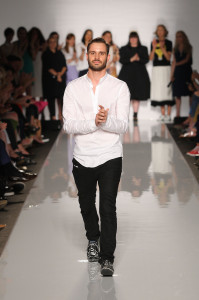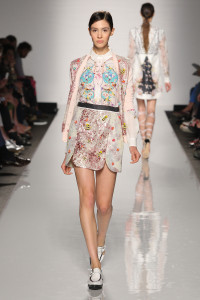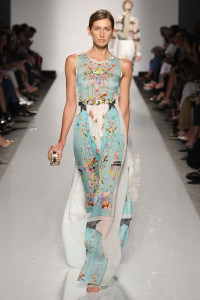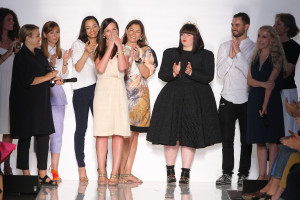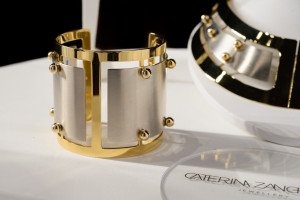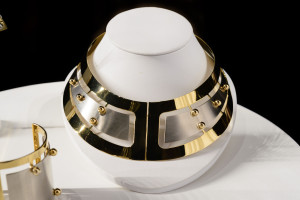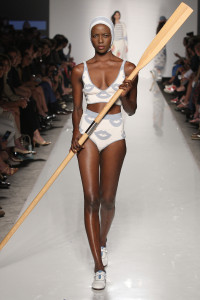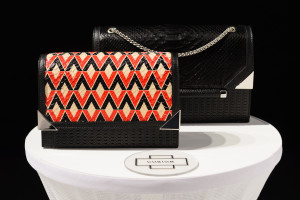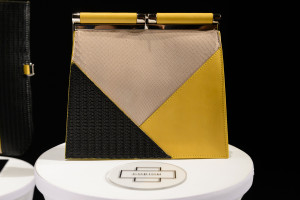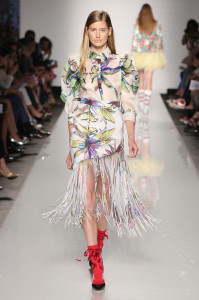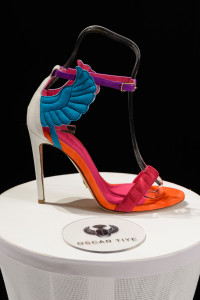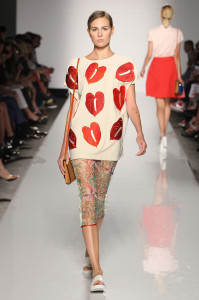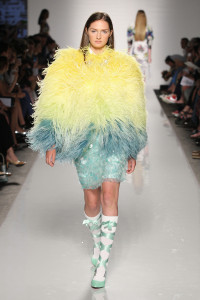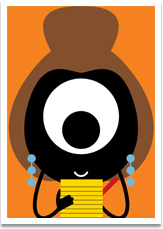Suzy Menkes reports from Rome’s fashion talent-spotting contest.
Their names are already part of the fashion lexicon: Nicholas Kirkwood and his fabulous footwear; Max Kibardin’s sensual and romantic shoes; the historical richness of the Aquilano Rimondi duo; the Grecian drapes of Angelos Bratis; the elegant decency from Esme Vie; and the joyous African prints of Stella Jean.
And so many more – all of them winners of ‘Who is on Next?’, Italy’s talent-spotting contest that celebrates 10 years of bringing fledgling designs and their nascent brands into the limelight.
I have been an intermittent judge of this scouting of creatives – who do not have to be Italian in this multi-cultural world, but who must be either based in Italy or manufacture their clothes and accessories in the country. That is not such a challenge, since Italy is the European cornerstone of high fashion construction.
My colleague Franca Sozzani, editor-in-chief of Vogue Italia, has been behind this initiative to take designers who have already planted their fashion roots – not graduating students. Or, as she put it, “they have to prove that they can build a business.”
As an editor myself, I am always drawn to designers with a passion for fashion. Although I was impressed by all the nominees for clothes and accessories, the winners spoke to my heart.
The enthusiasm of Salvatore Piccione, from a small Sicilian farming family, was evident as he talked about his London experience working with British designer Mary Katrantzou, from whom he had absorbed a love of printed and ornamental embellishment. He also had support from Lake Como fabric company Mantero, to make fabric and decoration seem sophisticated.
‘I want to be on the runway with beautiful things to make women happy,’’ said the designer, who calls his brand Piccione Piccione. His parents, who had left their tomato farm for the day, joined in the celebration where their son was feted as a rising star.
From the moment that Daizy Shely sent out her tropical paradise of a collection, with its bouncy skirts a cross between tinsel and fake grass, I warmed to her exuberance.
As she talked about her personal trajectory from a village in her native Israel, though her arrival in Milan five years ago and fashion studies at the Istituto Marangoni, I recognised the passion and determination in her designs. Using deer leather contrasted with macramé lace, Daizy proved that she had a feeling for texture as well as colour and shape. Some of her collection was wild and uncontrolled, but so much better that than being dull or tame in this early part of her career.
It seems unjust not to write in detail about all those chosen for the final stage of ‘Who is on Next?’. The bags created under the Corion label, by Milica Stankovic from Belgrade were luxury products in the discreet mode of current style and a fine example of Italian craftsmanship.
Marianna Cimini, from the Amalfi coast, is 100 per cent Italian with a background design experience with Max Mara and Tod’s. I liked the freshness of her natural textiles and sweet embroideries. The collection had a modern edge and a certain restraint, and I was not surprised to hear that it was already selling online with Moda Operandi.
What else stood out? The botanical prints of Project 149 by a design duo from Cremona: Elisa Vigilante and Monica Mignone. Knits with a folkloric twist came in the Tak Ori label of Ukrainian Svetlana Taccori – although I would have liked to see more of her ethnic roots in her summer collection.
From the metallic geometry of Caterina Zangrando – whose career was started by a chance encounter with Vogue editor André Leon Talley – to the other accessories designers, I felt that that all those chosen had a good combination of maturity and vivacity.
Who will go far? That is always the question. But the decade-long success of ‘Who Is on Next?’ and the support of AltaRoma has lit a torch for fashion grown in Italy.

